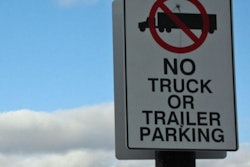“Customers, frankly, don’t know what’s about to hit them,” Jim O’Neal, president and CEO of Springfield, Mo.-based O&S Trucking, told attendees at the Randall-Reilly Fall Trucking Symposium in Phoenix last month. O’Neal was referring to the impact of the new split sleeper berth rule, which went into effect on a transitional basis Oct. 1. Actual enforcement – except of egregious violations – won’t begin until Jan. 1.
Under the previous rule, any two sleeper berth periods of at least two hours stopped the 14-hour on-duty clock if they totaled at least 10 hours, giving drivers flexibility in their work day. The new rule forces a driver or team to take one period of at least eight hours in the sleeper berth, while the other minimum two-hour period can be taken in the berth or elsewhere. But here’s the kicker: The two-hour period doesn’t stop the 14-hour clock.
Ten days after the Federal Motor Carrier Safety Administration announced the revised rule, the Owner-Operator Independent Drivers Association petitioned the agency to reverse itself and allow the two-hour break to stop the clock. OOIDA also asked that team operations be allowed to split rest as they could under the previous rule. Two months later, American Trucking Associations President Bill Graves wrote FMCSA, expressing concern over the revised sleeper rule and vowing to gather related data on safety and productivity.

But OOIDA’s request for changes and ATA’s statistics are unlikely to have much impact. FMCSA revised the rule to satisfy the court order brought about by a lawsuit from safety advocates. Those same groups are already criticizing the revised rule because it doesn’t reduce driving time and because it retains the 34-hour restart. For FMCSA to give in to the trucking industry now would only bring about another round of lawsuits, which already may be inevitable.
At the heart of the opposition to the revised rule is resistance to change. Most of the 2,400 truckers commenting on the FMCSA website want the flexibility to catch a nap and to sit at a loading dock without it counting against their driving time. But that just gives shippers and carriers flexibility at the expense of your productivity.
Under the revised rule, productivity will no doubt drop in some operations, and there’s never been a better time to recoup those losses. Capacity is tight. Drivers are in demand. In this climate, shippers will have no choice but to partner with the trucking industry to make this new rule work. And drivers’ well-being – physically and financially – will be the better for it.









